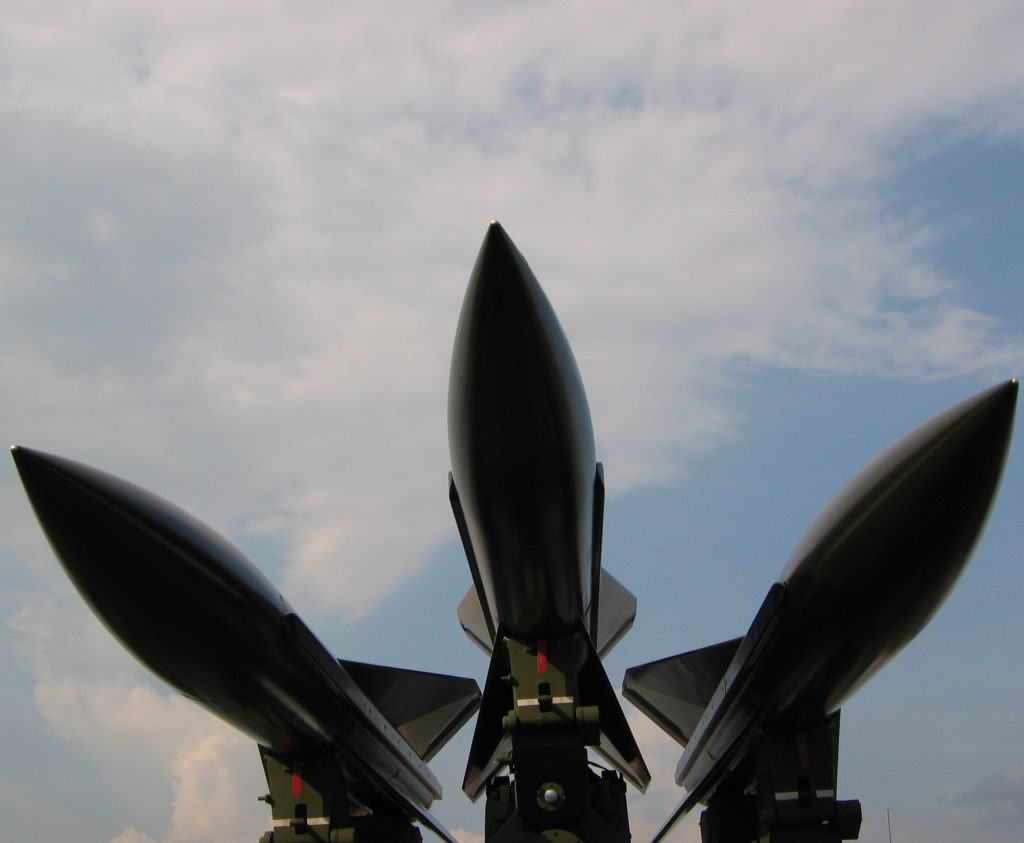
Source: Dreamstime
The shares of producers of weapons, missiles, rockets, fighter jets, ships, tanks, drones and all sorts of military equipment are considered a good investment in times of economic uncertainty. Even though they do not provide staggering profits, usually they are a constant source of income, since government expenses (mainly the U.S.) remain relatively constant.
When, however, there are geopolitical tensions and wars, the shares of defence companies become very attractive. Then, government defence expenses soar and the orders for all sorts of weapons are literally pouring in. And this is quite logical.
There were two factors converging in the past year: worries about an upcoming recession and a war of long unseen size and fierceness, in Europe at that. Quite naturally, the defence corporations are rubbing their hands with delight. – There will be lots of orders in the coming years.
The U.S. government provides military aid worth billions of dollars to Ukraine, mostly as weapons and equipment. The British government is not far behind. The other NATO and EU members also send weapons and equipment from their stocks and those stocks will have to be replenished. Urgent orders for ammunition and weapons which can be produced quickly are placed, so they can be handed over to Ukraine. Some countries send more contemporary equipment, while those from Central and Eastern Europe are looking to get rid of their Soviet-era weapons and replace them with more modern ones of NATO standards. At present, the main problem of the defence corporations is how to increase and speed up production.
But even without war, those corporations do not suffer from lack of clients and massive orders.
Data of the Stockholm International Peace Research Institute (SIPRI) released in the end of 2022, shows that the weapons sales from 2015 to 2021 are constantly on the rise (19%) and in the year before the war in Ukraine broke out, the 100 largest companies in the sector sold goods and services to the tune of $600 bln. It is also the year with the largest sales since SIPRI started gathering data 20 years ago. Sales in 2022 will most likely be even more staggering.
The five top positions are taken by American corporations: Lockheed Martin, Raytheon Technologies, Boeing, Northrop Grumman and General Dynamics, followed by Britain’s BAE Systems, with the top 10 completed by Chinese companies.
The 40 American companies on the list of the 100 industry leaders hold 51% of all sales. Second is China which posts a significant rise and holds an 18% share, followed by the UK far behind (6.8%) and France (4.9%). The share of Russia before the start of the war in Ukraine was 3% and Germany holds 1.6%.
So let’s take a closer look at how the leaders are doing!
According to the SIPRI ranking for 2021, the first position is for Lockheed Martin. Ninety percent of its sales worth $67.04 bln., are of weapons. Among Lockheed Martin’s most popular products are the HIMARS rocket launchers, as well as the modern F-35 fighter jets, recently ordered by Australia, Germany, the Netherlands and the UK. Not long ago, the company said it expects more orders. In addition, the U.S. government placed an order for 255 Black Hawk helicopters worth $6.6 bln. In one year, the Lockheed Martin shares rose 71.44%.
Second is Raytheon Technologies with sales totalling $64.39 bln. Of them 65% are weapons – mainly rockets and rocket systems. Among them is hugely popular in Ukraine Javelin, as well as Tomahawk and Patriot. Recently the U.S. government ordered air defence systems worth $1.2 bln., which will be handed over to Ukraine. Earlier in the year, it also ordered air-to-air missiles for almost $1 bln. Besides, the large portion of Javelins are already expended and the stocks must be replenished. For one year, the shares of Raytheon Technologies rose 2.75%.
Boeing, which is better known for its civilian aircraft, ranks third among the defence corporations. Its sales in 2021 total $62.29 bln., of which 54% are weapons. The company builds reconnaissance and cargo aircraft, tanker planes, helicopters, fighters, rockets, bombs and drones. Within the last 12 months Boeing’s shares rose just 1.49%.
Northrop Grumman had sales worth $35.67 bln., 84% of which are weapons. It produces aircraft, drones, rockets, missiles, including hypersonic missiles, artillery, munitions, boats, etc. Not long ago, the company presented to the public the new strategic stealth nuclear bomber B-21 Raider which will be used by the U.S. Air Force. One such aircraft costs $750 mln. and USAF has ordered 100. Six are almost ready and the maiden flight will be sometime in mid-2023. Additionally, the U.S. government has placed a $3.3 bln. order that will bolster the U.S. missile defence. In one year the shares of Northrop Grumman rose 76.19%.
General Dynamics ranks fifth. It had sales worth $38.47 bln., 69% of which are defence industry products. It produces nuclear submarines, battleships, the F-16 fighter jets, tanks, infantry fighting vehicles, munitions and firearms. Last year it got a $1.1 bln. order from Poland for 250 Abrams tanks. Big orders for munitions are also expected because the stocks have been sent to Ukraine and need replenishing. In one year General Dynamics’ shares rose 16.53%.
Of course, if we lived in a perfect world, those companies wouldn’t have existed or at least wouldn’t have enjoyed such solid sales and orders, but if you still want to trade CFDs on their shares, you can use the opportunity provided by Deltastock.
OR
Disclaimer: This article is for information purposes only. The information herein provided does not constitute a buy or sell recommendation for any of the financial instruments herein analysed.
Deltastock AD assumes no responsibility for errors, inaccuracies or omissions in this article, nor shall it be liable for damages arising out of any person’s reliance upon the information on this page. Deltastock AD shall not be liable for any special, indirect, incidental, or consequential damages, including without limitation, losses or unrealised gains that may result.